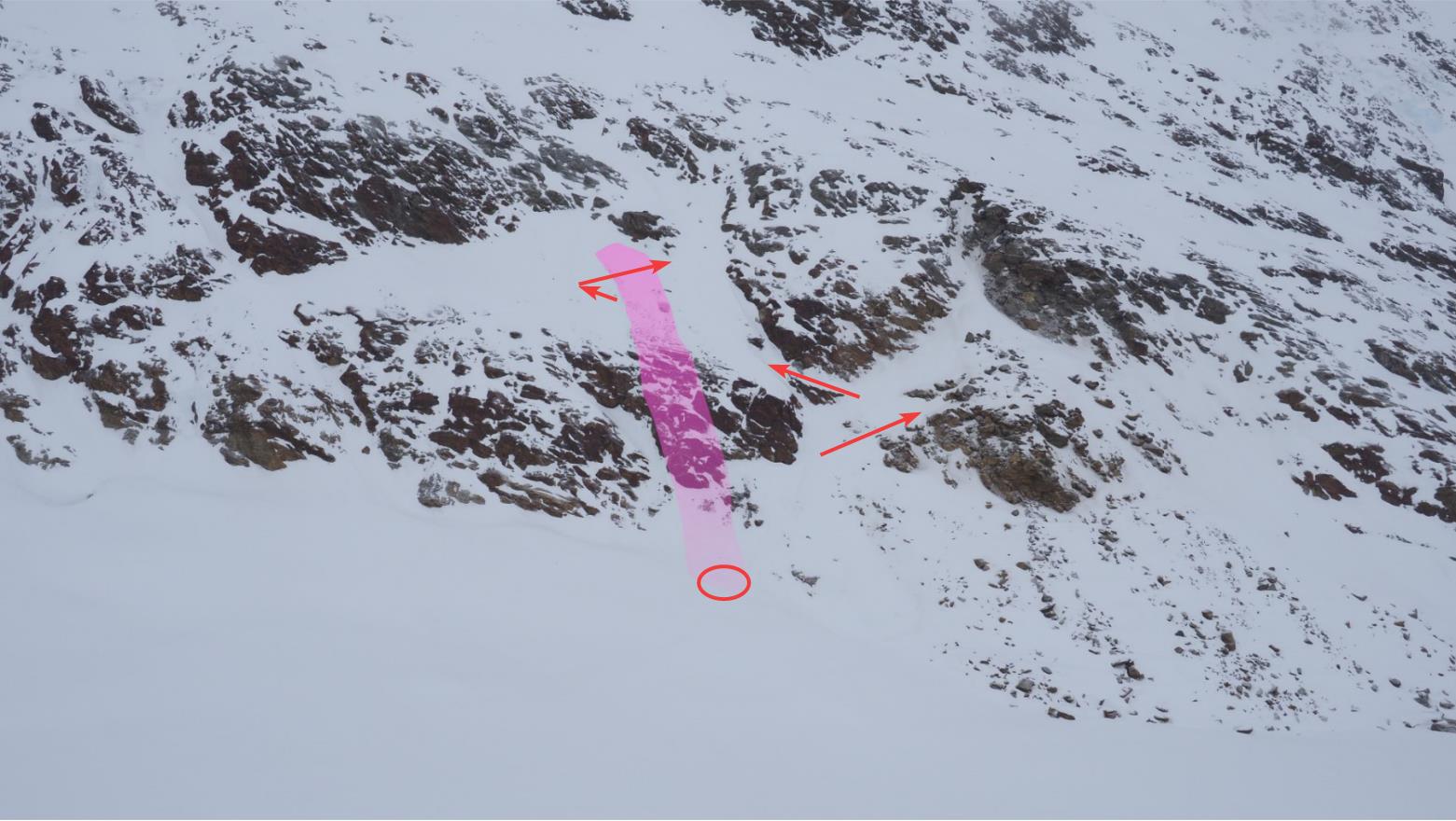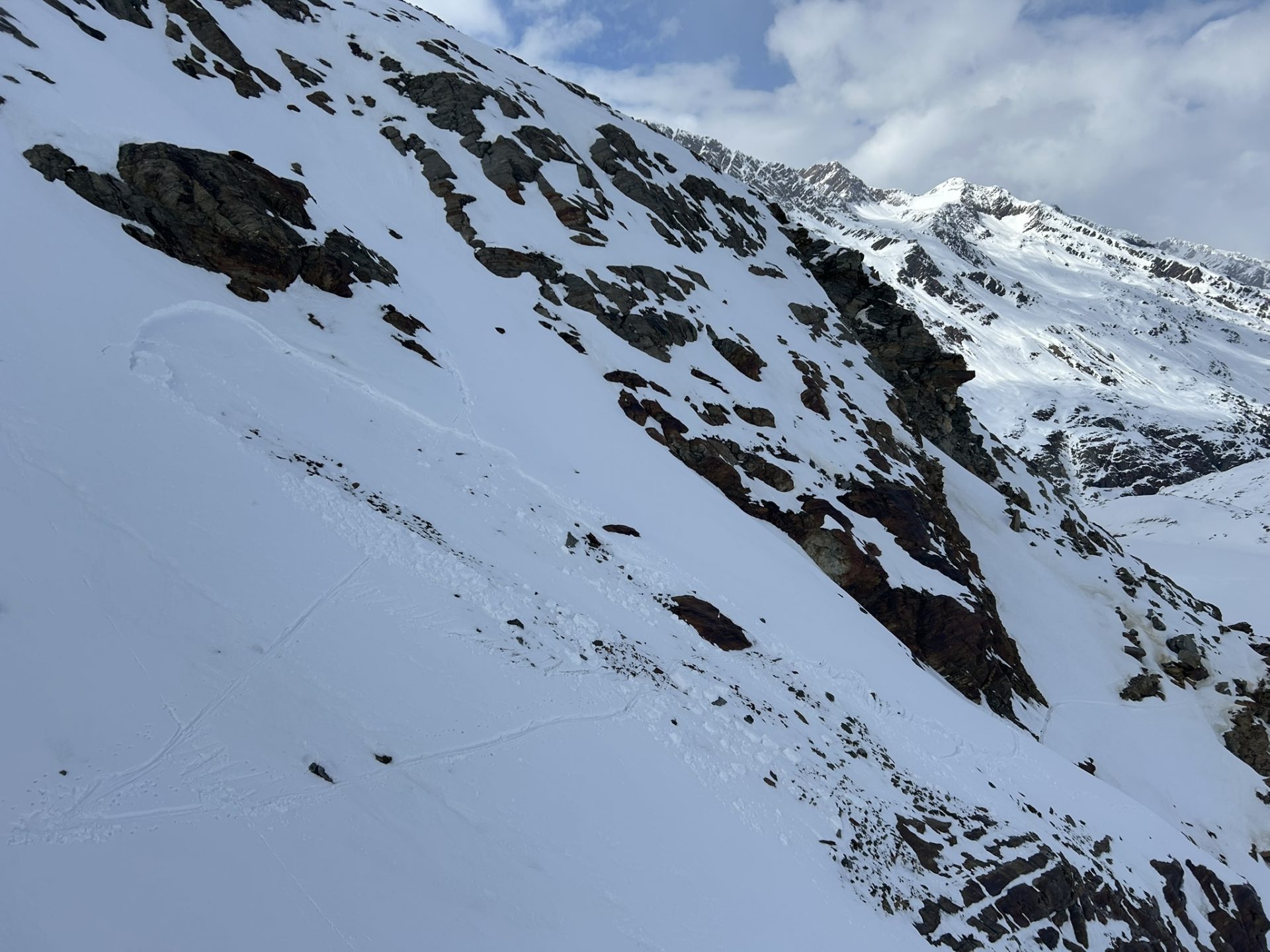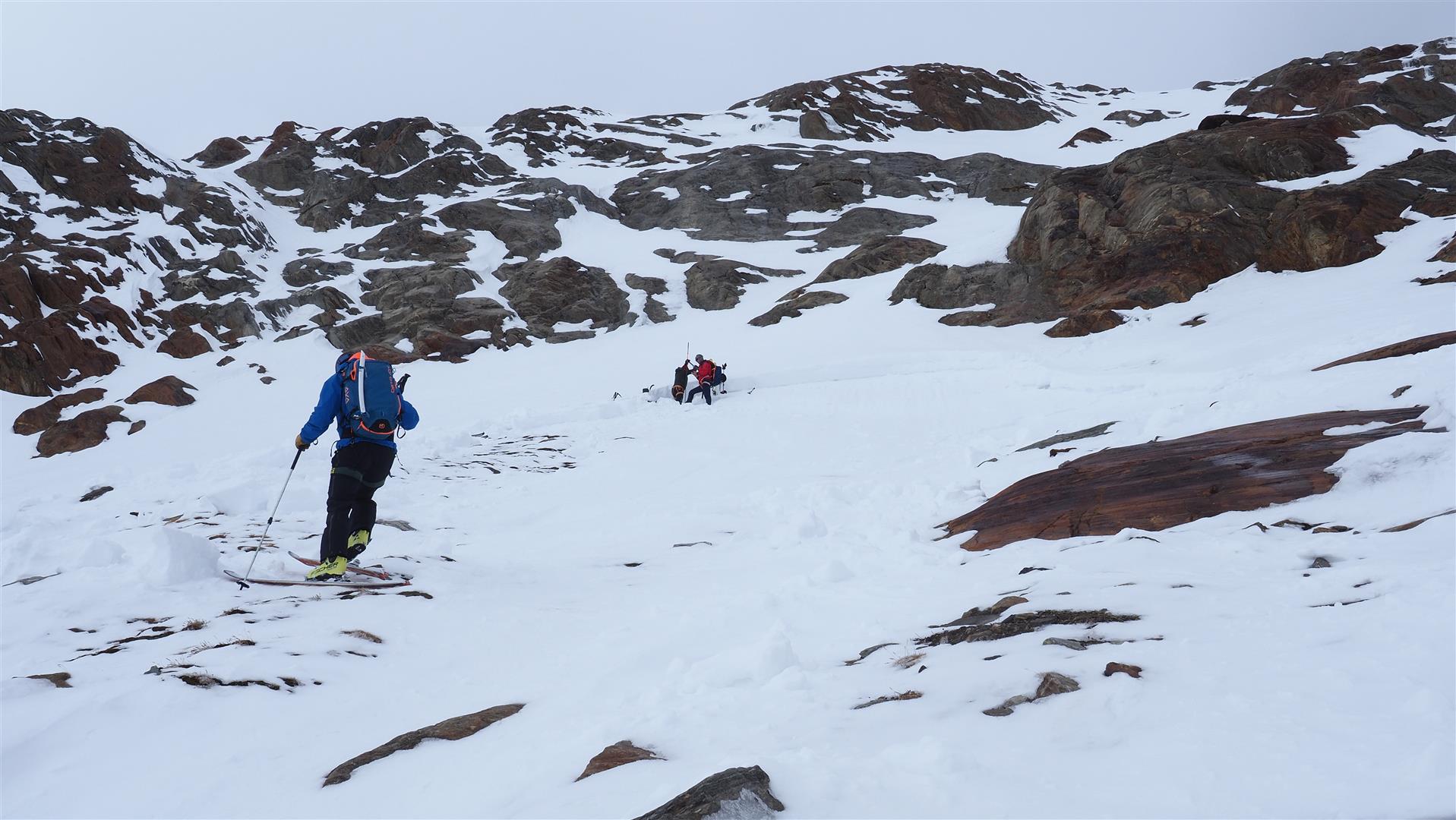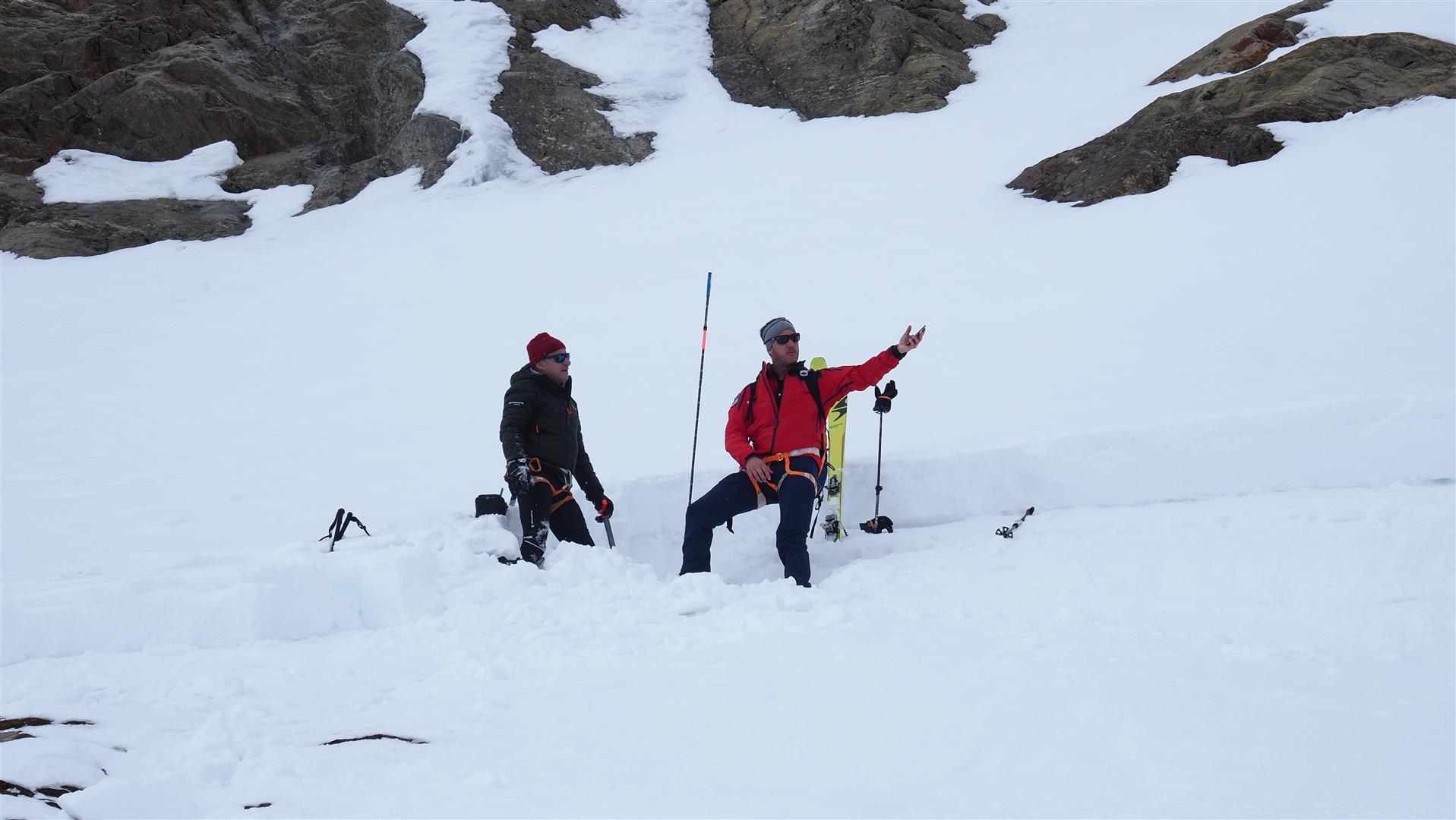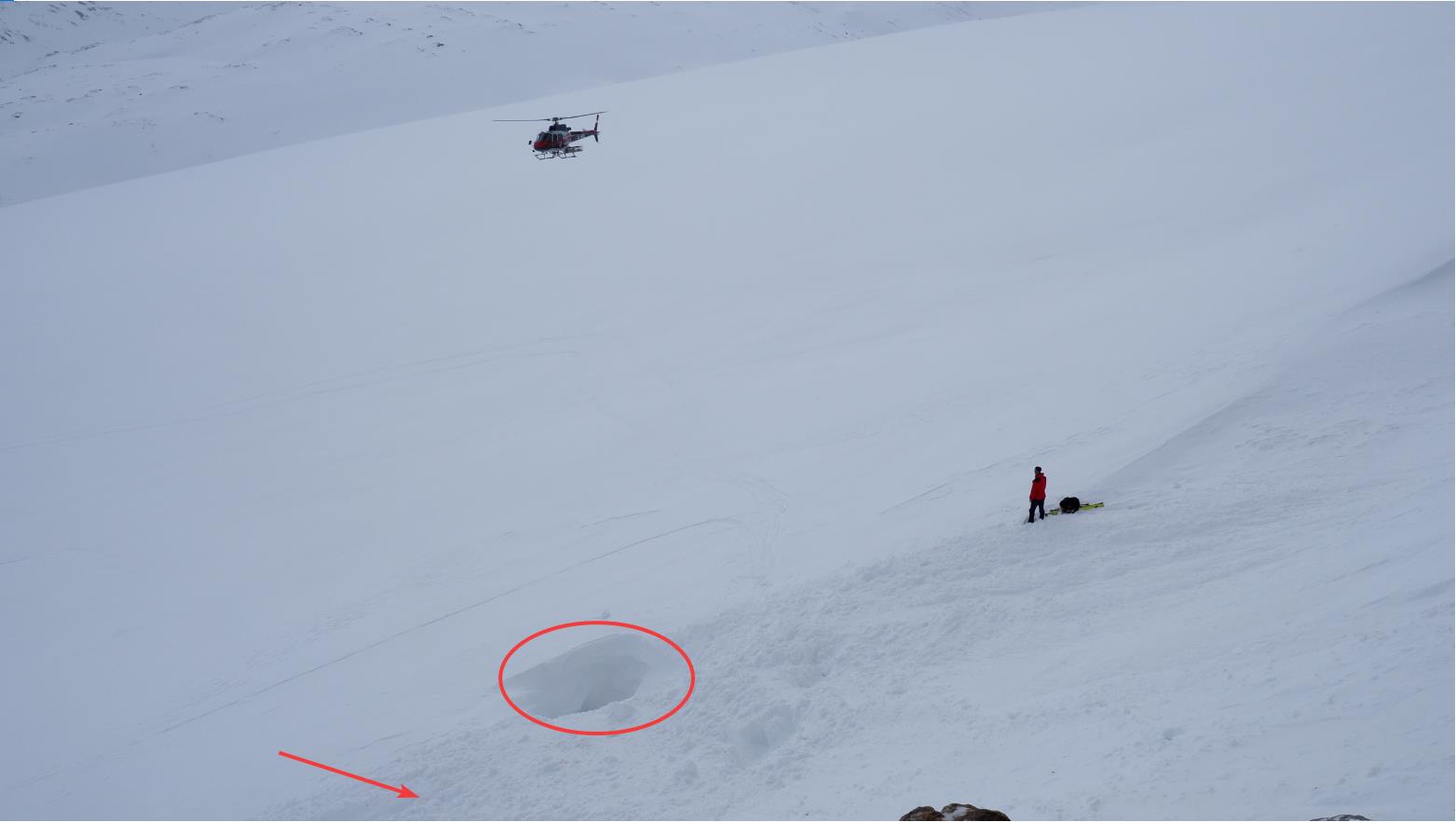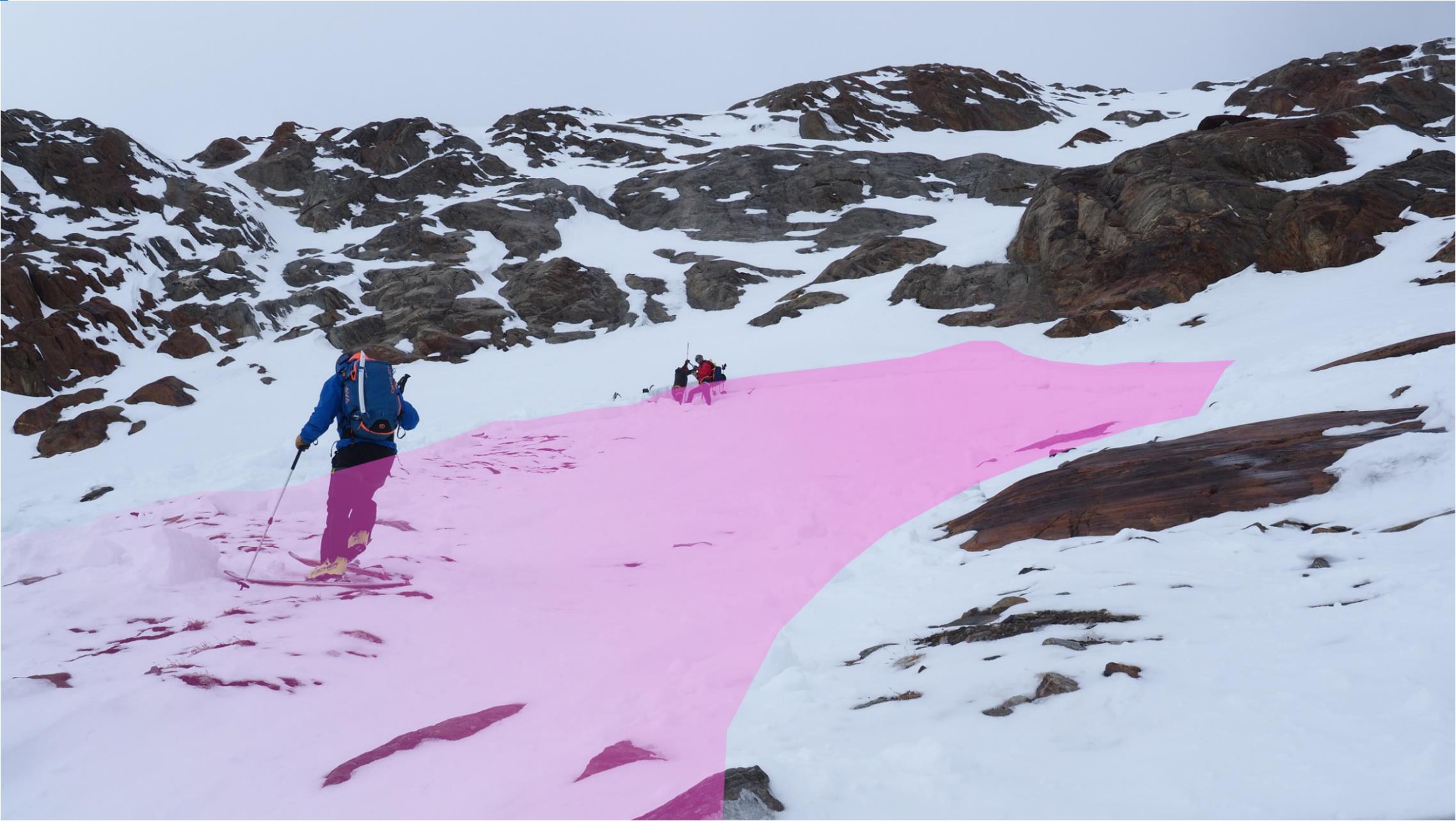On Monday, 24.03.2025, two persons died in an avalanche below the Schalfkogel in the Gurgler Massif. The release was a small slab that initially swept along three persons over rocky terrain and then buried two of them in a crevice at the edge of the Gurgler glacier. Cause: persistent weak layer.
How it happened
A group of six persons set out from the Langtalereckhütte in the Gurgler Massif to the Martin-Busch-Hütte via the Schalfkogel. As the group ascended (maintaining proper distances from each other) just above the Gurgler Ferner, a small slab avalanche triggered at about 2840m. It caught three persons in the group, plummeting snow masses swept them over rocky terrain. One of the persons escaped with only slight injuries to the orographic left of a crevice at the edge of the glacier. Two persons were swept into a crevice of the Gurgler Ferner and totally buried. These two did not survive, in spite of immediate rescue efforts by their comrades.
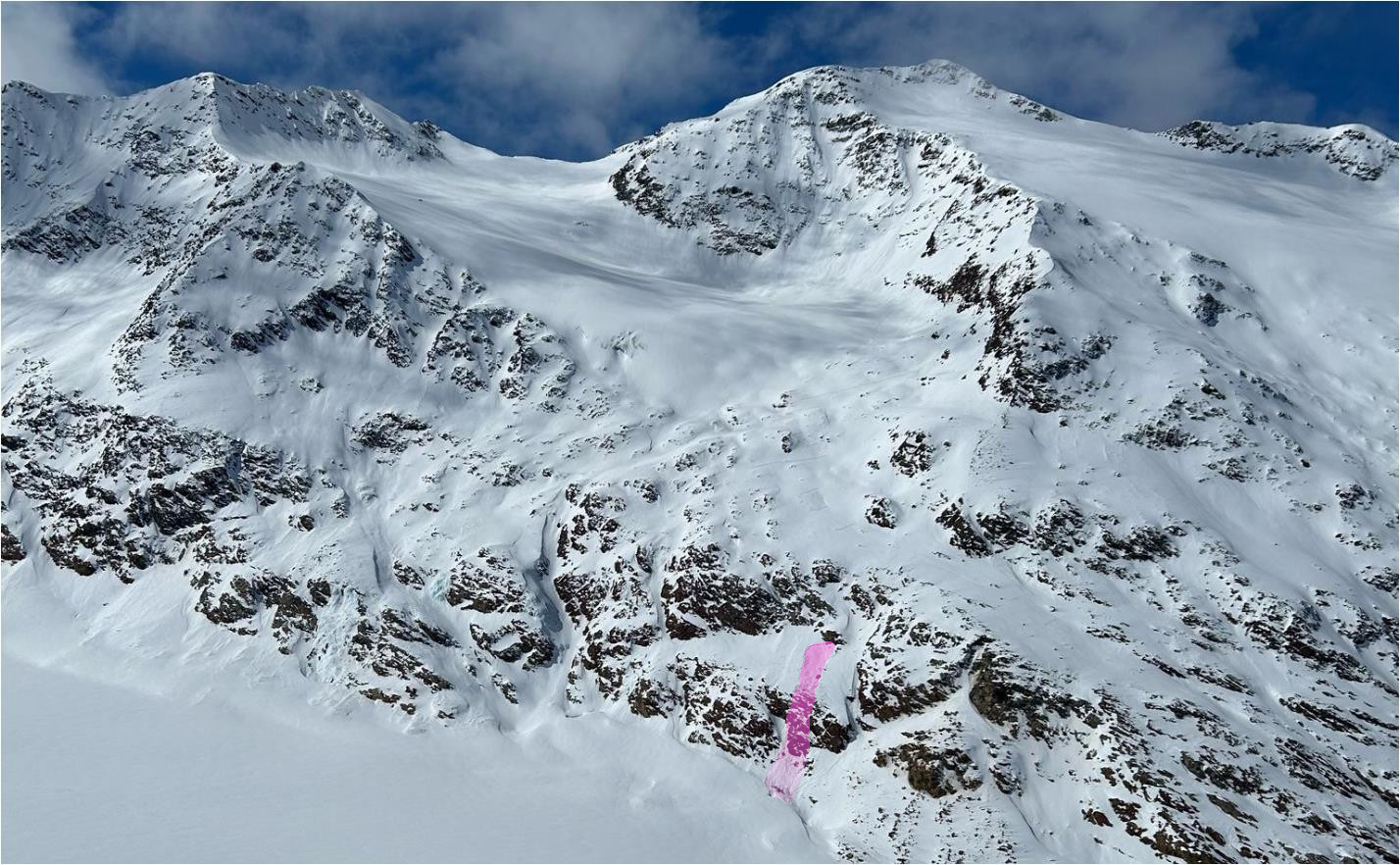
Snowpack analysis
We were flown to the scene of the incident today, 25.03.2025, together with the Alpine Police in order to investigate the background of the avalanche. Our snowpack analysis revealed that a persistent weak layer was the cause of the incident. The snowpack surface that formed on 10.03.2025 served as a slab. Significant weak layers were evident beneath two thin layers of loose, faceted crystals which in turn were covered by thin melt-freeze crusts. These two sequences of faceted crystals plus thin melt-freeze crusts were the result of two minor snowfall events (13-14.02 and 26.02) as well as the subsequent long, dry periods of fine weather.
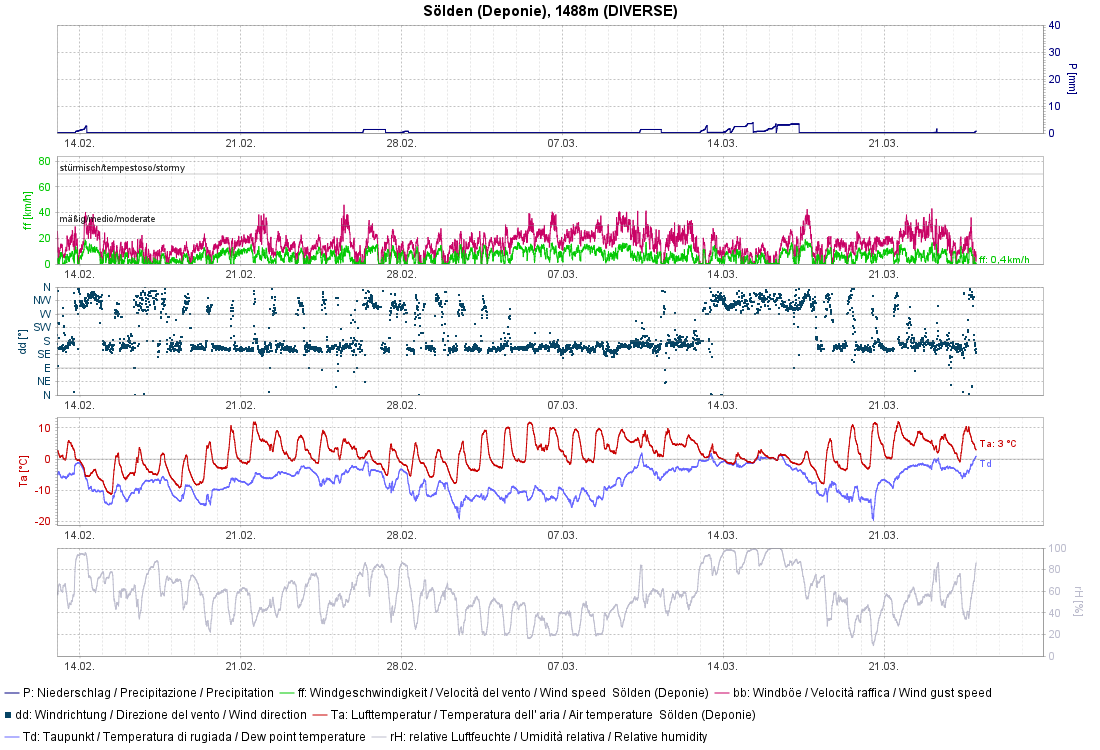
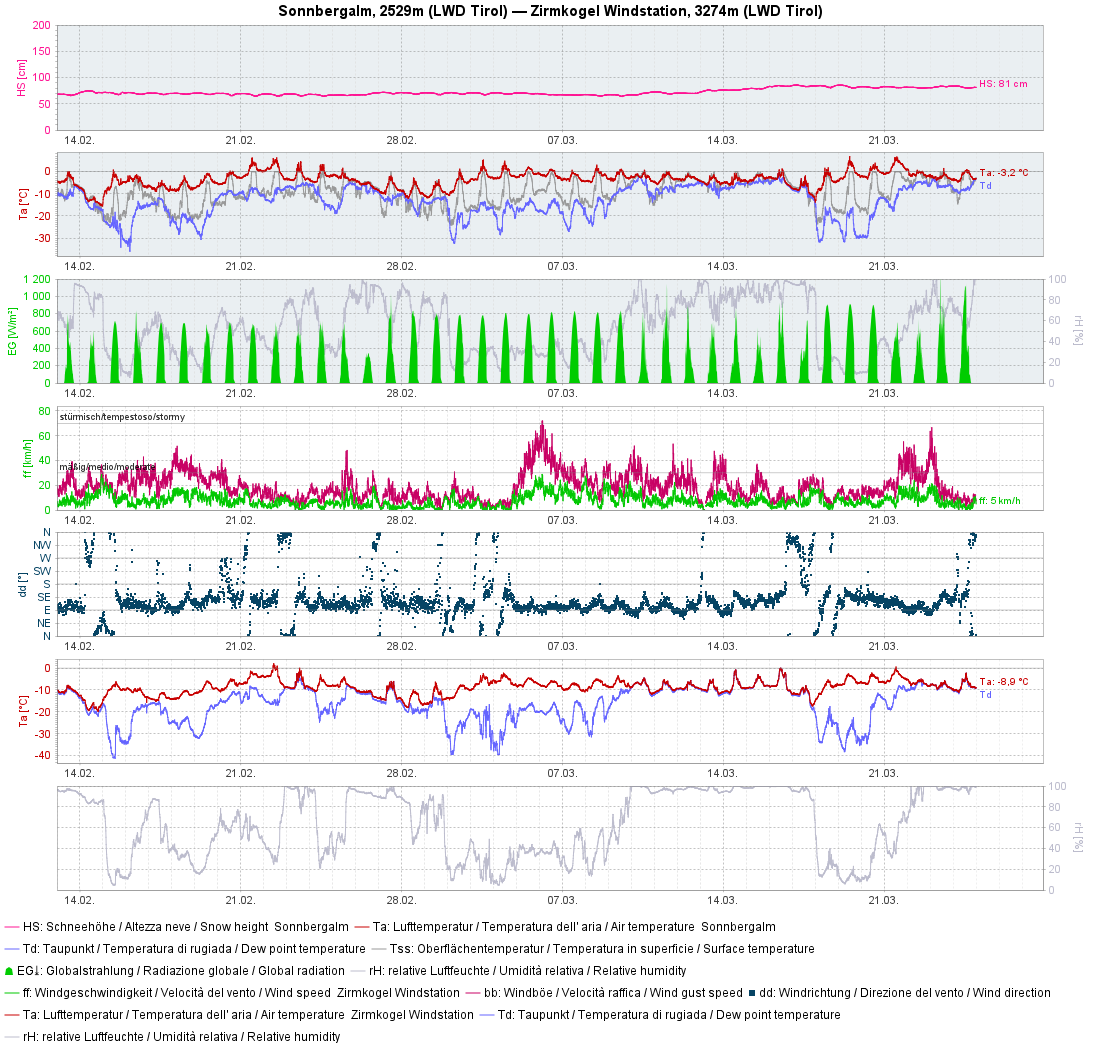
We took snow profiles at several different places and also conducted stability tests. The crucial element for possible triggerings and/or complete fracture propagation was a well-formed slab, not evident everywhere.
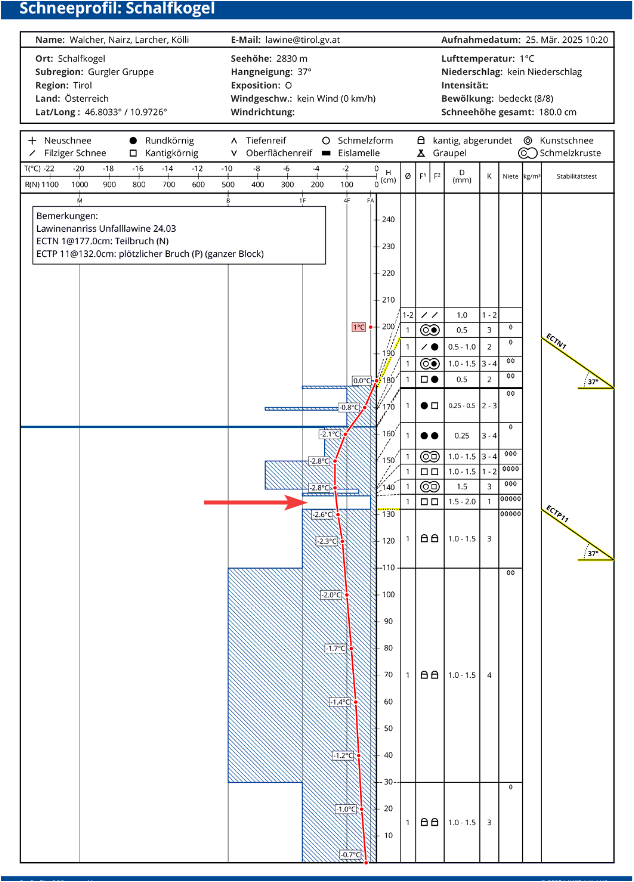
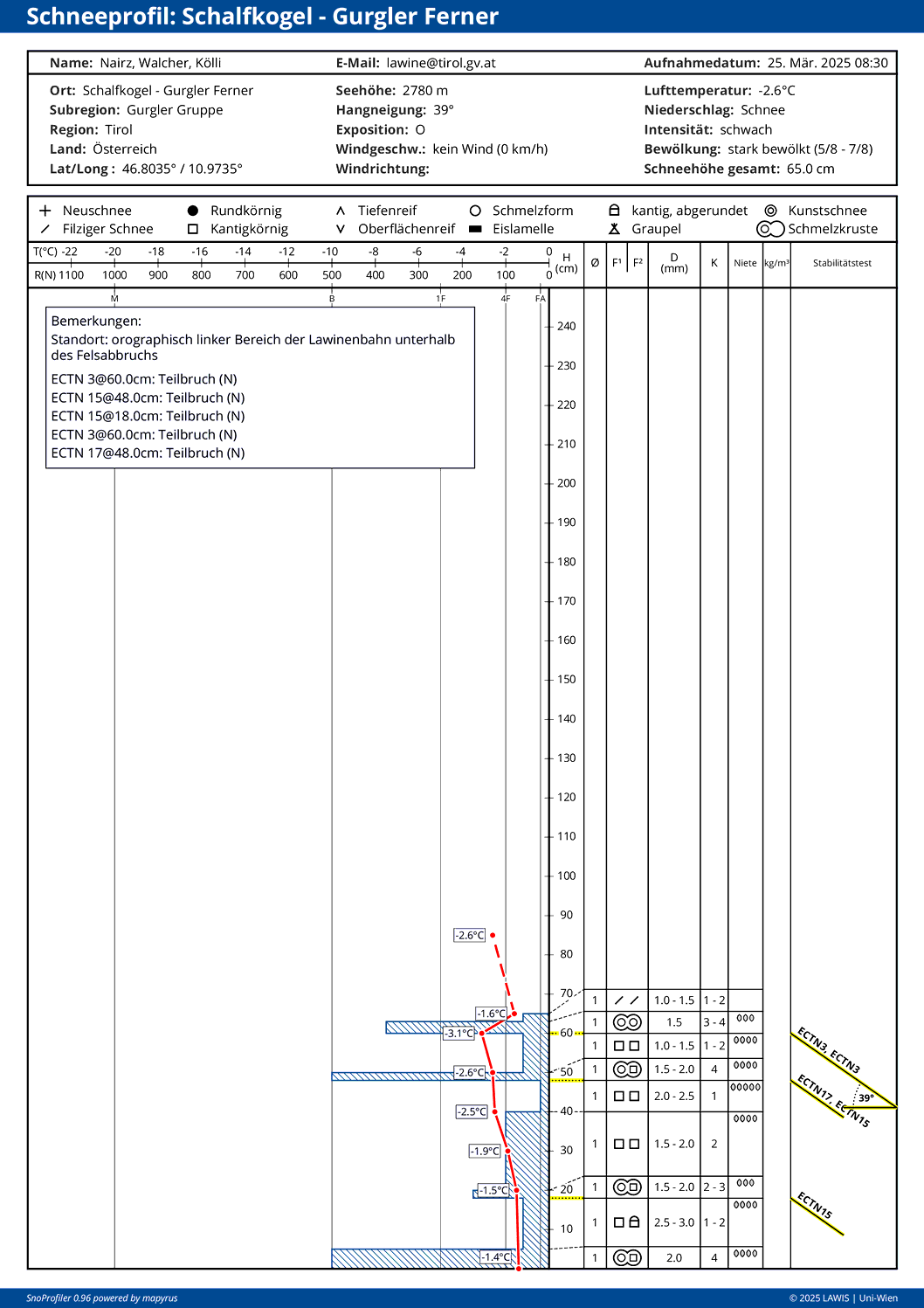
Another profile of the scene as well as snow profiles can be found – here.
The fatal avalanche
The fatal avalanche was a small slab release. Maximum width was 16 metres, length was 125 metres. The fracture occurred at 2840m, was between 30cm and 60cm high, average fracture depth was 45cm. The slope gradient at the upper ascent track was 35° and faced east. In the avalanche plummet path was a shelf of rocks, and also a 6-metre deep crevice in the avalanche path into which two persons were swept and buried.
